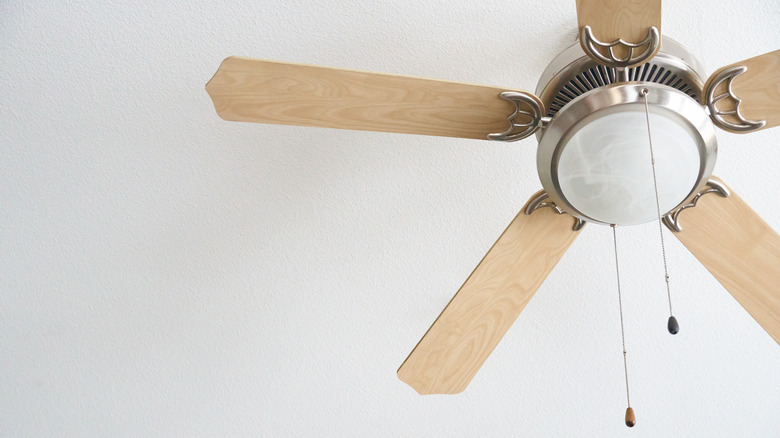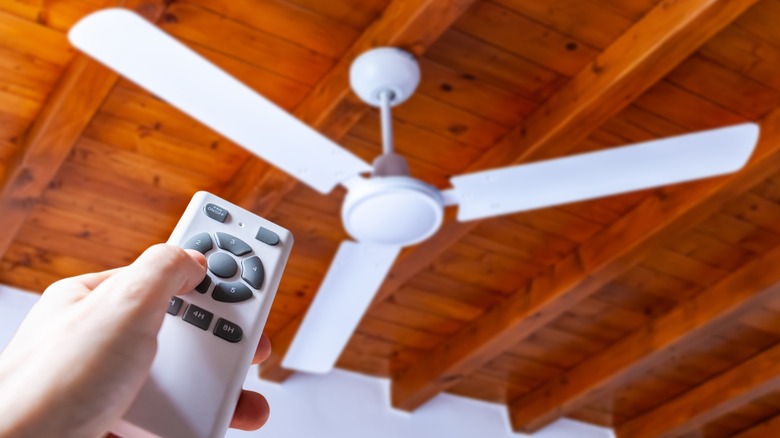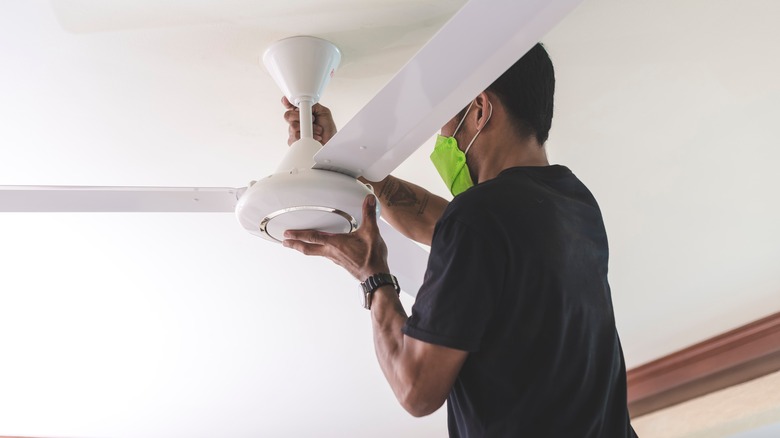Why You Should Change The Direction Your Ceiling Fan Spins In The Winter
While your ceiling fan might be the last thing you think of when you're dealing with chilly winter weather, a simple change in direction can actually help you keep your house warmer, as it helps circulate the hot air coming from your heater. According to a report from the World Economic Forum, the average American household pays upwards of $1000 to keep their home adequately heated throughout the cold season — so why not get the best value for your money and save your furnace from working overtime? You might even save a few bucks on heating costs in the process.
This simple switch is incredibly easy to do and requires no tools, save for a ladder or stool to reach your fan, so it's a seasonal no-brainer. Keep reading to learn which direction your fan should be running in the winter, how to properly switch the direction it spins, and why this basic hack works so well.
Why should you switch your fan's direction?
During the warmer months, your fan should be running counterclockwise. According to Hunter, this direction works with the angle of the blades to push air downwards, providing you with a direct, cooling breeze. During the winter, however, you should switch the fan to spin clockwise.
While this may sound counterintuitive, changing your fan's direction actually helps to create an updraft and evenly circulate warm air throughout the room. It also prevents you from being hit with any extra cool breezes — something that can be quite unpleasant if your house is already chilly. All you need to do is keep your fan on the slowest mode, and you'll reap the benefits without directly feeling any airflow. By using the fan to properly circulate the warm air, your heater won't have to work as hard to keep your space warm, meaning it will run less often and save you a bit of money over time.
How to switch
The best part about this trick is how easy it is. If your fans are controlled by a remote or an app on your phone, simply change the setting with the press of a button — no ladder necessary. If you have a regular, pull-string, fan, however, it's slightly more involved, but it's still a very simple switch, explains Hunter.
First, you need to determine the direction your fan is spinning to see if you actually need to make any changes. All you need to do is stand underneath and watch — this is much easier if it's on the lowest setting or slowing down. From there, turn it off and allow it to come to a complete stop. Most fans have a switch either on the side of the body or within the light fixture, so climb up on a ladder if it's too high for you to reach. Flip the switch, screw the glass cover back over the lights if necessary, and turn your fan on to the lowest setting. Now, you're ready to more efficiently heat your home.


